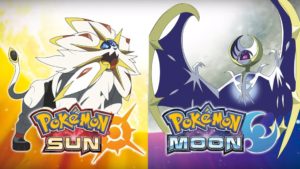
Pokémon is viewed, in both American and Japanese culture, as one of the greatest role-playing games ever created. Soon after Pokémon Red and Blue hit the market in the 1990s, Pokémon quickly became a video game phenomenon like no other. In 2016, “Pokémon Sun and Moon,” the newest generation of the Pokémon game series, was released for the Nintendo 3DS. With the pair of games comes new forms for existing Pokémon, along with new monsters to capture and battle.
Despite being designed for the portable 3DS system, this game looks gorgeous. The colors are vibrant and there are currently no technical hiccups to speak of. Even for those owning older 3DS models, the game is still enjoyable and there is no slowdown to speak of. The game captures its island setting perfectly, depicting beautiful sunsets and shimmering water, all captured in the art style that has become widely associated with Pokémon on the 3DS.
As far as new Pokémon designs go, it’s a bit of a mixed bag. While some of the new Pokémon look pretty simple, such as one that is essentially just a woodpecker, some of the new Alolan forms drastically change the designs of previous Pokémon. The option to customize the protagonist has returned from Pokémon X and Y, and it feels just as immersive as it did back when it was first introduced in Generation 6.
With this being an RPG (role-playing game), there are tons of characters that can be met throughout the journey, and much like other RPGs, these characters can be forgettable at times. The typical Trainer classes like Youngster and Bug-Catcher make a return, but they are quite one-dimensional, usually having only one or two lines of dialogue. However, for the main characters, it is a different story. Unlike past games, there is only one rival character, a storytelling move that ultimately proves to be smart because it helps the story to stay focused instead of spreading itself thin.
As far as the gameplay goes, it’s the standard Pokémon formula, but with a bit of a twist. Instead of towns, there are islands to visit with their own unique Pokémon and Pokédexes to go along with it. This is a neat addition that makes the world feel larger and more diverse as a result. Also, the addition of Alolan forms for certain Pokémon adds some new flavor with distinctly different typing and designs for each Alolan Pokémon. The whole goal of Pokémon is to make the journey special to the player, which Pokémon Moon continues to provide. Like with so many RPGs, these tools add replay value exponentially.
The battle system remains largely unchanged from previous entries, and as a result people who have played Pokémon games before should have no problem getting into this game. One of the complaints that this reviewer had with Generation 6 was that the new type, Fairy, was introduced but wasn’t utilized to its full potential. Pokémon Moon does a better job with the Fairy type, adding more Pokémon and more powerful Fairy type moves for those Pokémon to utilize.
The most intriguing thing about these games going in were the rumors that there weren’t going to be any more Pokémon Gyms. Gyms, a staple of the franchise, would be replaced by Island Challenges, which basically are Gyms, but sometimes detour away from typical Pokémon battling. In short, there are certain trials that the character has to complete on each of the four islands and such challenges aren’t necessarily battle based. Personally, this reviewer liked the Gym system, and did not see anything wrong with it, but it is still clear why people would enjoy this new gameplay element.
Overall, “Pokémon Sun and Moon” are just as great as some of the best Pokémon games out there. 3DS owners should do themselves a favor and go out and buy one of these games. They are more than worth their $40 price tags.
*Note: This reviewer based his article specifically on “Pokémon Moon” Version
